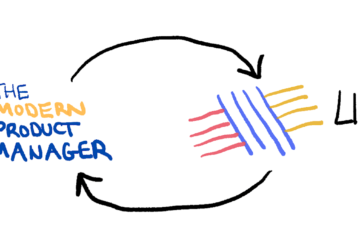Author: Sachin Bhat
Introduction
Ever been intrigued by the habits that make people successful?
Is it discipline?
Perseverance?
An active body/mind?
Drive?
Patience?
Consistency?
Bouncing back?
Strength of character?
Writing?
Reading?
Public speaking?
Time-management?
Productivity?
All of these are essential, but do you want to know the three habits that are a precursor to all of the others?
Both in our professional and personal life, many of us, at one time or the other, have to multi-task.
You may have to perform and review competitive analysis, prepare a presentation, present to your bosses, discuss strategies with your peers, lead cross-functional and/or cross-geographic teams, understand legalities with the legal team, involve external/internal stakeholders, etc.
These tasks might overwhelm you, and by the time you complete them, you might feel, at the very least, tired.
How can you conquer them?
More importantly, how to be the best in all of them such that you feel neither overwhelmed nor tired?
One obvious way of dealing with these tasks is to ‘Multi-Task’. i.e. perform the tasks as and when they arise, often multiple tasks simultaneously, and try to finish them up to the best of your abilities.
However, “Multi-Tasking”, as it turns out, is a BIG productivity killer. It saps out every ounce of energy you have and makes you feel overwhelmed.

The issues with multi-tasking are many:
1. The human brain is NOT wired to multi-task (Article)
2. When we multi-task, we spend a lot of time switching between tasks (after all, that is what Multi-Tasking is!)
a. However, when we switch from Task-1 to Task-2, we have to leave Task-1 and begin Task-2. After a while, when we switch back to Task-1, we not only have to read/recollect Task-1, but we ALSO have to recollect its stage i.e. where we left Task-1 and what/how do we continue Task-1.
b. The same is true when we switch back to Task-2.
c. Imagine if we had to multi-task 10 tasks! How much additional time and effort would we have to spend just to re-read and re-collect where we left off each task?
3. On top of this, imagine the distractions/ad-hoc activities that might come up! (think about the funny messages that might land up as a message/SMS/WhatsApp, a short video clip, a “Notification” of the arrival of a new email…… the list is endless!)
a. These distractions/ad-hoc activities themselves might qualify as another task! (heh heh…. Getting scared, aren’t you? Believe me….. I have been through all of these!)
b. Professor Gloria Mark from the University of California, Irvine, told Fast Company that it takes an average of 23 minutes and 15 seconds to get back to the task after an interruption.
c. You also have to get back to “speed” to the task that got interrupted!
4. These distractions themselves might become an addiction! (like checking for new messages every 5 minutes)
Imagine if there were a way around all of these issues?
What if there were a magic formula that solved all of them?
That would certainly make you more productive AND energized!
The Formula
Planning + Mono-Tasking + Review
Planning
Usually, all of our tasks are known before-hand. We could just list all of them out, for the week/month.
Also, leave a Task “XXX” for any ad-hoc/unplanned tasks that might crop up.

Suppose our list of tasks for the week is as follows:
- Team Meetings
- 1–1s with management
- Feedback to subordinates
- Meeting with marketing/communications team
- Discussions with the UX and Dev team
- Feedback sessions with the customers
- Interview sessions with the users
- Recruit new people
- Plan L&D for the existing crew
- Discussion with legal team
- “XXX” tasks (as indicated in the planning section above)
Each of the above tasks might very well be extended beyond the stipulated time, which might be out of your control.
With the list of activities (not exhaustive — but enough for us to plan), we start our planning.
Plan— A
We might decide to carry on all of these activities every day (depending on the availability of the stakeholders) as and when they arise. This could be classified as “Multi-Tasking” and has many pitfalls as mentioned earlier.
Plan— B
Another approach might be to group related tasks by a common theme: team/location/expertise needed/ etc.
For example, Group-1 might include the following activities:
- “Team Meetings”
- “Meeting with Marketing/communications team”
- “Feedback to subordinates”
Group-2 might include the following activities:
- “1–1s with management”
- “Feedback to subordinates”
- “Discussions with UX/Dev Team”
- “Plan L&D for the existing crew”
Group-3 might include the following activities:
- “Feedback sessions with the customers”
- “Interview sessions with the users”
Group-4 might include the following activities:
- “Recruit new people”
- “Discussion with the legal team”
The ad-hoc tasks as well as “distractions” could very well exist in every group.
Once this is done, we can carry out the tasks in each group — this way, we minimize our “Multi-Tasking”!
Plan-C
Now that we have our groups, we might plan further and carry on our tasks by each day of the week!
For example:
- Monday might include activities from Group-1
- Tuesday might include activities from Group-2
- Wednesday might include activities from Group-3
- Thursday might include activities from Group-4
- Friday might include any additional/left-over tasks from any group, as well as planning for the next week
This is better than Plan-B since we further minimize our “Multi-Tasking”, and still get all the tasks completed.
Plan — D
We could, if required, further split each day into 1/2/3-hour slots to focus on the “ONE” task — This would allow us ample of time for the task at hand to reach at least a partial closure, we could pick up the next task in the group.
For example,
- Monday 9 am-12 pm might include task-1 from Group-1
- Monday 12 pm-1 pm might be lunchtime
- Monday 1 pm-4 pm might include task-2 from Group-1
- Monday 4 pm -6 pm might include task-3 from Group-1
- And so on….
Mono-Tasking

After planning, the next step is to execute the plan. To reduce the distractions while executing the plan, you could keep your phone in “Airplane’ Mode, and check the phone only at a pre-scheduled time.
It is important to write a list (a “To-Do” List) and keep track of it.
Since many organizations block certain websites, I usually create a “To-Do” list in Excel, and my system automatically opens this Excel file when my system starts.
You could place a “Shortcut” to your Excel file in the Windows “Startup” folder, and Windows will automatically open this Excel file when your system starts.
Review
At the end of the day, review the status of each task, and accordingly, plan out the next day/week.
This keeps you focused and motivated to complete the tasks.
Conclusion
Want to cultivate any habit(s) and stick to the habit?
Cultivate one habit at a time, be consistent in it.
It will take some time to learn and practice the new habit, but once done, it becomes fully automatic. After that, cultivate another habit and still another one…. One habit at a time!
Large conglomerates also utilize the same strategy: Focus intensely on one industry, and once it stabilizes, Focus on another industry!



0 Comments